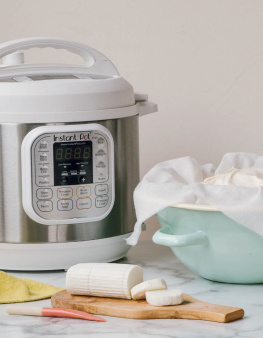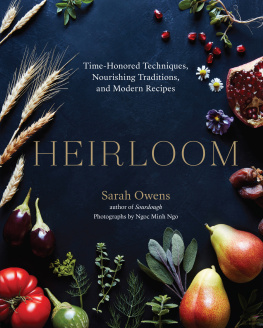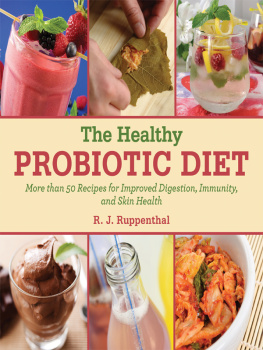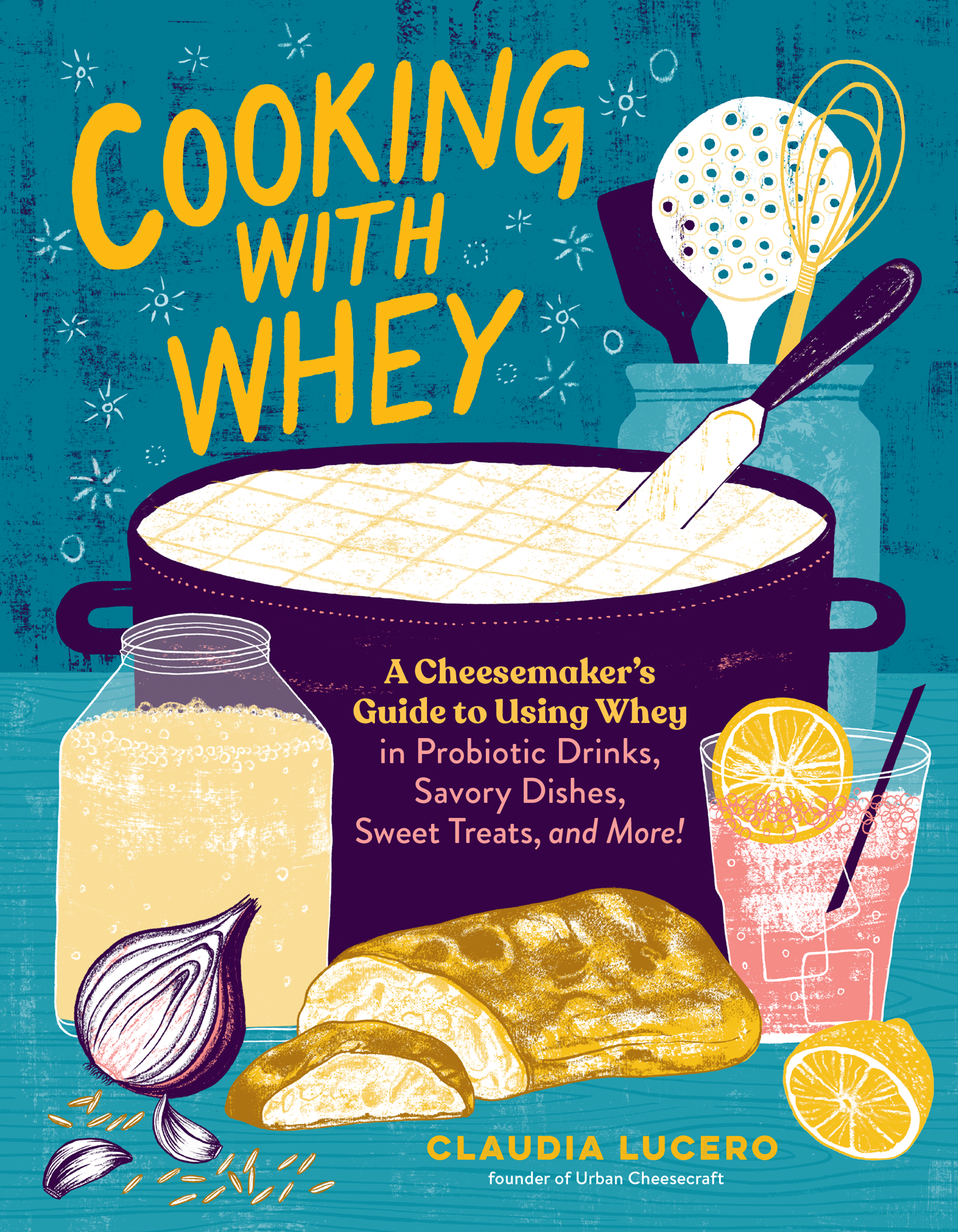The mission of Storey Publishing is to serve our customers by publishing practical information that encourages personal independence in harmony with the environment.
Edited by Lisa H. Hiley and Carleen Madigan
Art direction and book design by Erin Dawson
Indexed by Andrea Chesman
Illustrations by Alice Pattullo
Text 2022 by Claudia Lucero
Ebook production by HK Goldstein
Ebook version 1.0
October 25, 2022
All rights reserved. No part of this book may be reproduced without written permission from the publisher, except by a reviewer who may quote brief passages or reproduce illustrations in a review with appropriate credits; nor may any part of this book be reproduced, stored in a retrieval system, or transmitted in any form or by any meanselectronic, mechanical, photocopying, recording, or otherwithout written permission from the publisher.
The information in this book is true and complete to the best of our knowledge. All recommendations are made without guarantee on the part of the author or Storey Publishing. The author and publisher disclaim any liability in connection with the use of this information.
Storey books are available at special discounts when purchased in bulk for premiums and sales promotions as well as for fund-raising or educational use. Special editions or book excerpts can also be created to specification. For details, please call 800-827-8673, or send an email to .
Storey Publishing
210 MASS MoCA Way
North Adams, MA 01247
storey.com
Library of Congress Cataloging-in-Publication Data on file
Dedicated to Jane
Your stories of Pennsylvania Dutch farm life and your familys Depression-era recipes made a big impact on me, as have you and your son. Thank you for these gifts and so much more.
Contents
How I Made My Way to Whey
I was raised with fresh Mexican cheeses. Nothing made me happier while out grocery shopping with my grandma than visiting the cheese counter for a soft, fresh cheese and then the tortilleria for a steamy corn tortilla. Those simple snacks assembled right there on the street were comfort-food bliss. I was lucky to be allowed/required to cook along with my mom and grandmother from an early age. Working in the kitchen with them, I absorbed the value and reward of cooking traditional foods from scratch.
Several generations of extended family gathered on Sundays to devour the food we made with so much love and care. As I followed this appreciation of good food into adulthood, I came upon cheesemaking and dove in deep. Amazed by my new superpower, I set out to teach others.
In addition to teaching classes, I created a line of three cheese kits for cheeses made in under an hour with one gallon of milk. I started an Etsy shop in 2009 and was soon filling wholesale orders to stores like Whole Foods Market and Williams Sonoma as well as many small businesses. After three years, I left my full-time job at the nonprofit Rock n Roll Camp for Girls and started to write books: first One-Hour Cheese, then One-Hour Dairy-Free Cheese, and most recently, Instant Pot Cheese. Being an author allowed me to travel the country on book tours and to teach classes.
More than a decade later, my small business, Urban Cheesecraft, is going strong thanks to loyal customers who want to take some of their food production into their own hands. All along, I have focused publicly on making cheese while privately coming up with a multitude of uses for whey. I am beyond happy to finally tackle the subject so that my customers, students, and hopefully many others can enjoy closing the loop on their homemade dairy production.
About the Recipes
When I set out to take on whey, I wanted to go beyond my own paradigms, skills, and creativity. I am delighted to have included recipes, insights, and uses from a variety of creative people in different fields. I know you will enjoy their recipes and expertise. I certainly have.
Many of the recipes I adapted myself reflect my Mexican roots. There are savory and sweet uses, main dishes, sides, sweets, and beverages. I also enjoy food from all cultures and wanted to include flavors from around the world. When a recipe didnt explicitly use whey but included milk or another liquid that I thought could be replaced with whey, I adapted it. The recipe contributors did the same.
Cuisines travel through history and around the world. In this book you will see influences from Africa, Brazil, France, India, Lebanon, Italy, Japan, Russia, Mongolia, Turkey, Scotland, Iran, Norway, Spain, several regions of the United States, and probably other places I dont even realize. I hope you adapt some of your familys traditional recipes using whey, too.
A Bit of Context
It would feel strange to share this book without mentioning that I wrote it during the initial lockdown phase of the 2020 COVID-19 pandemic. That may explain why I included many sentimental memoriesand why no-yeast bread became important! I had to extend my deadlines more than once because it was difficult to develop and test recipes when stores either didnt have enough stock or were setting limits on staples like yeast, milk, eggs, and flour. At the same time, many of my recipe contributors were fighting for their livelihoods and homeschooling their children, not to mention worrying about their own and their familys health, as we all were. I did not want to pepper the book with reminders of the sadness, fear, and upheaval of that time, but the struggles we faced were too important to ignore completely. Suffice to say that it became more critical than ever to avoid waste, to feel self-reliant, and to be creative.
Im convinced that the challenging circumstances made this book richer in the end. I am nothing if not resourceful, so I managed to create a book despite the obstacles, and one that I am proud of. Testing the recipes comforted me immensely, my household ate well, and we remained healthy. This little time capsule of a book will always be precious to me.
My greatest hope is that this book can influence home cheesemakers, yogurt makers, and the dairy industry to put whey to full use as a resource. I have just scratched at the surface of possibilities. There is so much more that can be done with this useful by-product. My entrepreneurial mind sees many seeds for businesses and innovation. I hope those seeds grow and spread with you. Lets say no to food wheyst!
Part 1: There's a Lot to Learn about Whey
On average, nine pounds of sweet whey are produced for every pound of cheese, and for every four cups of Greek yogurt, at least one cup of acid whey is created. A single dairy-product plant in Michigan produces 11,000 pounds of whey per hour, every day, all year long. Multiply that by all the cheese found in grocery stores and home refrigerators in the nation, not to mention the entire world! Thats a lot of whey, most of which used to be treated as waste and dumped into waterways.
The problem with that is that excessive amounts of whey wreak havoc on life in lakes and ponds. Oxygen levels in the water drop and too much algae grows, blocking sunlight and affecting fish and other wildlife. In 1974 the EPA stepped in to prevent the large-scale disposal of commercial whey. As an alternative to sending excess whey to wastewater treatment plants, companies have had to look for more creative methods to dispose of it, which include agricultural uses as animal feed and fertilizer and developing nutritional supplements, such as whey protein powder, for both human and animal consumption.









